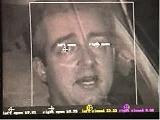| Back to Projects |
Intersection Monitoring |
Detection and
Classification of Vehicles |
Real-time Tracking |
Monitoring crowded scenes |
Overview
Publications:
- Driver Activity Monitoring through Supervised and Unsupervised Learning. (PDF)
- H. Veeraraghavan, S. Atev, N. Bird, P. Schrater and N. Papanikolopoulos. Driver Activity Monitoring through Supervised and Unsupervised Learning. In Proc. IEEE Conf. Intell. Transport. Syst. (ITSC 2005), pp. 895−900, Sep. 2005.
- Vision based methods for driver monitoring. (PDF)
- E. Wahlstrom, O. Masoud, N.P. Papanikolopoulos. Vision-based methods for driver monitoring. In Proc. IEEE 6th International Conference on Intelligent Transportation Systems, pp. 903-908, Shanghai, China, Oct. 2003.
Demos:

Driver fatigue monitoring Movie 1(2.0M)

Driver fatigue monitoring Movie 2 (2.5M)
People:
Faculty Nikolaos
Papanikolopoulos Nikolaos
Papanikolopoulos |
Research Associate Osama
Masoud Osama
Masoud |
Graduate Students Stefan Atev Stefan Atev Nathaniel Bird Nathaniel Bird |